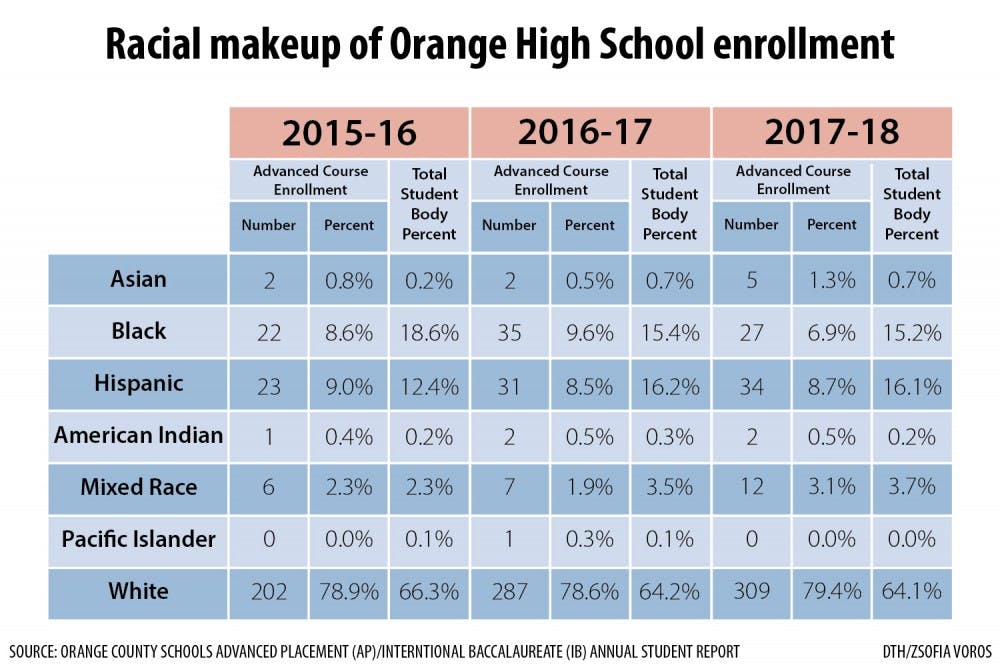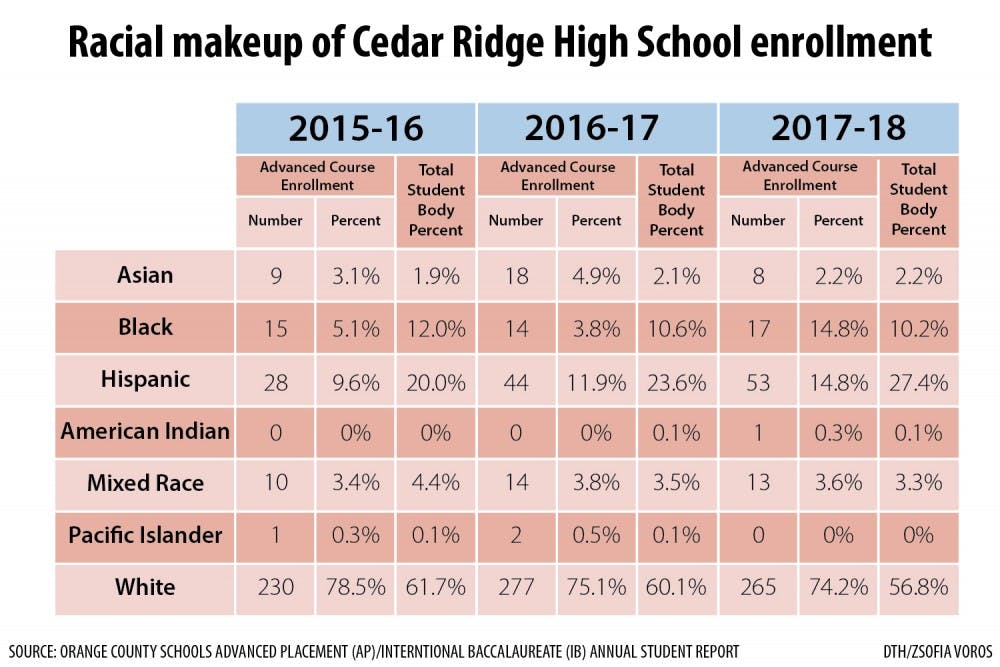The students at Orange County Schools that enrolled in Advanced Placement, International Baccalaureate and Project Lead the Way courses took a total of 1,042 advanced exams in the 2016-17 school year.
They passed 64.1 percent of those exams, continuing an increasing pattern from the 2015-16 school year (63.1 percent pass rate) from the 2014-15 school year (62.1 percent). The IB diploma recipients graduated with an average weighted grade point average of 5.07, up from 4.84 in 2016, marking the largest jump in GPA since at least 2012.
“With Cedar Ridge, the pass rate for AP is 65.1 percent, and for IB it is 70.5 percent,” said Jason Johnson, the director of secondary instruction for OCS. “At Orange High School, the AP pass rate is 56.8 percent. With that said, the North Carolina pass rate for AP exams is roughly 52 percent, and the national average is around 56 percent.”
But the students in these programs are also considerably more white than the rest of the school, a fact which greatly troubles the OCS Board of Education and was the main focus of an annual report on advanced coursework at the Board's Oct. 23 meeting.
“Our baseline benchmark as we're trying to increase access to our courses is the demographics of our school,” said Jake Henry, OCS’ chief academic officer. “If 27 percent of Cedar Ridge's population is Hispanic, then our baseline goal for our representation is that 27 percent of our AP and IB enrollment would be Hispanic as well.”
OCS is a high-performing school district that lives in the same county as another high-performing school district, Chapel Hill-Carrboro City Schools. CHCCS came under fire this year for having the second-largest achievement gap in the nation between white and black students and the fifth-largest between white and Hispanic students, according to research from the Stanford Center for Education Policy Analysis. And while things are not as pronounced for OCS as they are for CHCCS, there’s still a wide gap between the enrollment of the schools and the enrollment in advanced classes.
OCS has two traditional high schools; Orange High School offers AP and Project Lead the Way (a career and technical education path focused on STEM) courses, while Cedar Ridge High School offers AP courses and the IB Programme.
Cedar Ridge’s student body is 27.4 percent Hispanic, but Hispanic students only make up 14.8 percent of enrollment in the school’s advanced courses. White students are overrepresented; Cedar Ridge is 56.8 percent white, but advanced course enrollment is 74.2 percent white.
Black students have gone from being underrepresented in advanced courses compared to their population in the overall student body to overrepresented in advanced courses over the past three years. Asian students have gone from being overrepresented in these courses to making up 2.2 percent of both the general student body and advanced courses.





